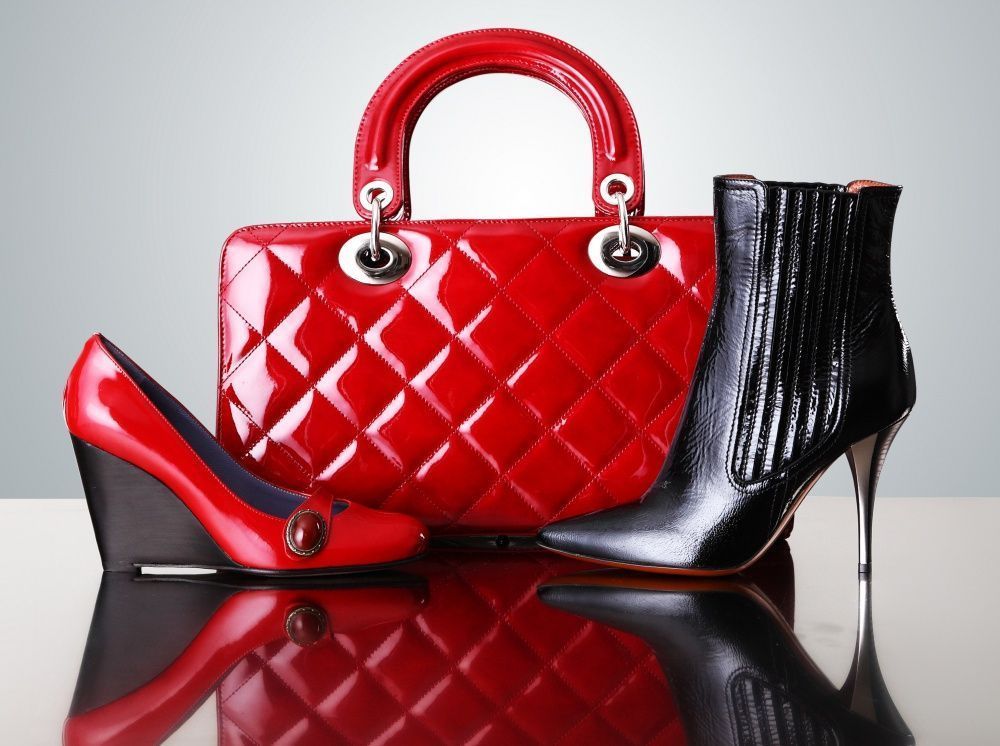
Way to increase sales

Do you think that from the rearrangement of places of terms the sum does not change ?! Just not in retail! Correct display of goods will increase store traffic and sales. Marina Polkovnikova, an expert on merchandising, is sure that simple methods of working with goods can bring your business to a new level.
 Marina Polkovnikova -
Marina Polkovnikova - founder and head of VMC Retail agency, expert in visual merchandising and store building; @marinapolkovnikova_official, Vmcreta
Addition and Subtraction Examples
Knowing the capacity of the trading floor will allow you to extract the maximum from each square meter, increasing profits as much as possible. How does merchandising a store begin? With the definition of its pricing policy. The design of the room, the amount of equipment purchased and the further display of goods will directly depend on the segment of the shoes you represent. The higher the price segment, the fewer pairs or half pairs represented on the 1 square meter of retail space. So, in the segment of medium and premium shoes, the number of models, as a rule, does not exceed 1,5-5 units. In the lower price segment, the layout is always denser. But here there is a certain limit: the buyer should freely take the goods he liked from the shelf, not being afraid to bring down the entire structure.
As a rule, a reference point is a shelf with a length of 120 cm. If you work in the middle and high-medium segments, then on this area you will have about 6 pairs of shoes, for example, two in full, two in full and again two in full . Of course, the presentation of shoes in profile gives the buyer the opportunity to better see the product - to evaluate the height of the heel, the overall design of the model, but a similar layout - at times reduces the capacity of the trading equipment. For the same reason, in most stores on the shelves are semi-pairs. Thus, the store owner saves space, allowing himself, if necessary, to expand the range of the store. Saving work space forces store owners to exhibit small models - 36-37. But before laying out the goods, it is necessary to take into account the existing demand: if 80% of your customers choose larger shoes, trying to save space on the shelves may turn out to be unnecessary problems: store employees will be forced to run to the back room more often for the necessary pair, which in turn can affect sales volumes.
Presentation tables and island structures use free display. In this case, you will have to manually calculate each shelf and each islet: here the calculation is based on the maximum capacity. For example, if the calculations gave you a figure in 100 units, you can decide to lay out exactly this number of pairs or set 200 half pairs in the same space.
Dimensional slide and right order
Based on the received figures, an order is formed: how much goods will be in the trading room at a time, plus stocks, taking into account the speed of formation and receipt of the order. Models in one size range can be purchased, and running models in several dimensional grids. When forming the assortment, it is very important to observe the correct proportions - how many units per size to order. The popularity of models must always be considered. A good manager is well aware of his clientele and "running size", which are sold in percentage and quantitative ratio better than others. There is a certain formula according to which, in a percentage, the buyer orders the sizes (emphasizing the most demanded "sizes, and minimizing the" non-working ") - this principle is called a bargain. In this case, the order of certain models can be formed as follows: 36-th size - 1 pair, 37-th - 2, 38-th - 2, 39-th - 1.
It should also be borne in mind that voluminous models of the autumn-winter season take up more space on the shelves, so the capacity of the “cold season” is usually 20% lower than in the summer period.
More colors and accessories!
Merchandising affects not only the number of units of goods to be purchased, but also the color palette ordered from the manufacturer of shoes. And here we must proceed not only from sales analytics! It is obvious that dark shoes, especially in the winter season, will be in great demand. But even if the sales analysis demonstrates the confident advantage of black shoes in the shopping basket of your store (up to 90% of the entire assortment), you need to buy colored shoes! This is dictated not only by the emerging market trend in recent years, but also by merchandising rules. However, color models must be chosen, focusing on the target audience of the store. If the main buyer of your store is a 40 + woman, bet on calmer colors - beige, brown. If you are focused on a young audience, you can experiment with red, wine and even more extravagant blue and purple tones.
Spread the goods, forming compositions of black and colored shoes, or alternating such models on the shelves. This will attract the attention of the buyer not only to bright products, but also to dark models. When black models stand next to each other, it is difficult to isolate their design features, to see the original design, as a result of which, there is a feeling that the product is identical.
Color models should be purchased at least 10% of the total volume, correctly placing them on the shelves, as well as in the shop windows. These are the so-called “anchor models” that draw attention to the shop window and to the focal points of the trading floor. The client may not dare to buy a similar model, but he will be interested in the goods standing nearby. It is important to remember that selling color models is very difficult, you may only sell them on sale, but with their help you will quickly sell other models.
Shoe stores often make an unforgivable mistake, forgetting the importance of accessories. Complementary products - bags, wallets, belts, gloves - when properly laid out, help sell the main product - shoes. If there are accessories in the assortment of the store, you need to place one or two models at each focal point. In the golden zone (the third shelf below, located at eye level), you can place a composition of two bags from the same collection and the same color, combining with shoe models (for example, with high heel shoes and without heels). And on the other wall - place a similar composition on the second shelf, thus creating a certain dynamic.
Change of exposure
The display of goods in the store needs to be changed often enough - ideally once in 2 weeks. The reason for the changes, as a rule, are new arrivals. In this case, it is important to place the new models at the focal points, and to put the “delayed” and unpopular ones into the background. That is, there is a partial change in both the assortment and the calculation. Allocate a new product a place in the promotional zone (the first third of the hall), as well as a storefront.
If the goods are not delivered to the store so often or imported only at the beginning of the season and immediately put up on the trading floor, you still resort to changing the exposure at least 1 once a month! What can be done? Swap the rulers: move the classics that were displayed in the middle of the trading floor to the right corner, and put the “romance” forward, on the contrary. You can go the simple way and swap the "walls", or on the same shelf, change the front layout to replace with the profile, etc. If you have a multi-brand store, swap brands collections. In the case when each brand is assigned a specific zone, change the layout inside each corner.
The same rules apply for shop windows: a complete change of exposure occurs once a season, but the goods displayed in the window must be changed every two weeks. The buyer should “hook” his eyes on the new models, notice that life in the store does not calm down after the seasonal change of goods.
Do not be afraid that such frequent changes will confuse the customer and if he doesn’t find the goods he liked during his last visit, he will leave the store. As a rule, when customers notice changes, they are interested in new arrivals, and they even notice models that they lost sight of in their previous visit.
Another reason for unplanned merchandising is poor sales dynamics. In this case, it is necessary to analyze the reasons for the drop in traffic, the drop in consumer activity, determine exactly which positions are in demand, which ones are not, which ones need to be more aggressively promoted. For example, in the middle of autumn it is already cold, but shoes are still in demand. Place ankle boots and boots in the industrial zone, and shoes in the back of the store.
Hot sale season
In the sales season, merchandising of the store changes dramatically: zoning occurs at the percentage of the discount, or at the absolute price. The first third of the hall in December-January is devoted to New Year's collections and evening shoes, this is the short time period when such products are in demand. If in the assortment of the store there is no such product, on the days of discounts at the entrance and on island structures, you post the most popular goods, which are sold at this stage with a small discount. For example, short ankle boots, warmed models of boots ... But not all of the space is filled with them: you allocate part of the promo zone for seasonal goods sold at a regular price.
In the early days of sales, do not rush to put the most “advantageous offer” at the entrance: it is attractive for the buyer, but not for you. Expose the goods, “drawing” the path: claim small discounts at the entrance to the store and take the buyer to the cheapest goods inland. At the end of the season, when the discount is already valid for the entire collection, move the goods with the maximum discount at the entrance, with the minimum - closer to the checkout. During this period, everyone offers a discount and your task is to “lure” the buyer to your store.
When the sales season is still ongoing, but the first batch of the new collection came to the store, it must be placed in the back of the hall, and then gradually increase its presence. When the new collection takes up more than 30% of the sales area, it is necessary to move it to the promo zone. Place the remnants of the goods sold at a discount in the most passive zone near the wall, using POS materials, informing the buyer that advantageous offers are still valid.
Professional approach
It is up to you to engage in merchandising yourself, to hire a specialist in the staff or to invite a professional from the outside. A network of 7 and more stores requires a full-time employee, and not just one: in this case, one of them carries out general management, analyzes sales, selects equipment and the general concept, the other works at points, directly engaged in the arrangement.
Small networks, as a rule, invite the merchandiser from the outside. Most experts in this area work precisely on outsourcing.
The fact that a professional in front of you will tell you his portfolio, which should include experience with leading retailers. Offer the merchandiser to complete a practical task, for example, within an hour or two, change the layout on one wall or in one store corner. He must justify the new arrangement: the goods should be presented favorably, it should be convenient to pick up. It is important that you want to come up and consider one or another model of the calculation. Here is a layman, if he used for calculation not all the goods provided to him, but partly weeded out with indistinct argumentation “This does not fit!”. If the product is the same in style, but part of the merchandiser is rejected, it means that it will continue to be the same and you will not find a compromise in work.
When inviting a professional to work, you should be ready for changes, not only in the calculation. A VM specialist can justify the purchase of additional equipment or the replacement of existing equipment. If you want to see the difference and attract a buyer to the store, you need an integrated approach. The merchandiser must check the correctness of the selected lighting, the presence of mirrors, comfortable sofas and armchairs, as well as how mobile the equipment is - can it be quickly modified to increase or decrease the quantity of the presented product, depending on its availability. It is important to remember that the ultimate goal of merchandising is to make the store understandable to the consumer, attractive and commercially successful.
An objective assessment of merchandising
The main indicator of correctly conducted merchandising is an increase in attendance. If there were no mistakes in the purchase (the assortment does not meet the expectations of the buyer), this will positively affect the sales of the store. In this case, an increase in the average check and the number of positions in it is expected.
Savvy staff
The work of even the most highly qualified merchandiser will be extremely difficult if your staff is not knowledgeable about VM, does not know the basics of laying out the product, its proper presentation. Regular exposure changes involve the participation of junior staff in the process. Therefore, sellers must understand why the goods are grouped exactly the way shoes should be displayed, what should be the distance between pairs or half-pairs ... They must carry out the orders of the merchandiser consciously, understanding the effectiveness of these actions.
| Please rate the article |
Materials on the topic
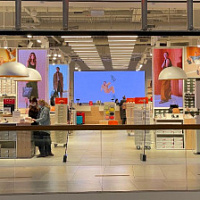
Should a shoe store spend money on digital screens?
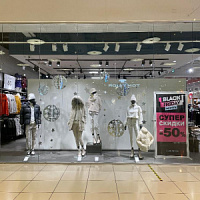
Mistakes in the lighting of the sales area that spoil the impression of a shoe store
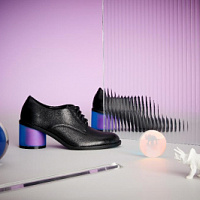
Technical aspects of display space and current trends in its design
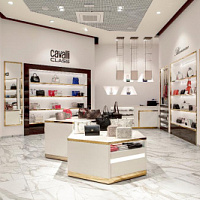
Design rules for a shoe and accessories store
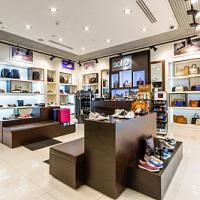
Pandemic-influenced visual merchandising transformation for shoe and accessories store
Popular
 Coach turned to Big Data analysis and won the interest of a young audience
American handbag brand Coach has planned the success of its Tabby model among a younger audience, Generation Z, by turning to big data analysis, abandoning traditional and analogue tools, such as human intuition or the ability of any executive to sense “which way the wind will blow,” writes B.O.F.
Coach turned to Big Data analysis and won the interest of a young audience
American handbag brand Coach has planned the success of its Tabby model among a younger audience, Generation Z, by turning to big data analysis, abandoning traditional and analogue tools, such as human intuition or the ability of any executive to sense “which way the wind will blow,” writes B.O.F.
 IDOL updates the concept
The IDOL brand, part of the Melon Fashion Group portfolio, opened the first flagship in an updated concept in the Aviapark shopping center in Moscow.
IDOL updates the concept
The IDOL brand, part of the Melon Fashion Group portfolio, opened the first flagship in an updated concept in the Aviapark shopping center in Moscow.
 Seven “sins” of the shoe business. How do owners harm the company with their own hands?
Why is Company X able to create a strong, profitable brand, but Company Y is struggling to make ends meet? Many people prefer to attribute success to luck, luck, or the support of strong patrons. And few people ask themselves the question: “What am I doing wrong?” Moreover, many entrepreneurs begin to harm their business from the first day of its opening. In this article, together with SR expert in the field of fashion business management and development, Maria Gerasimenko, we will look at the 7 main “sins” that business owners commit using specific examples.
Seven “sins” of the shoe business. How do owners harm the company with their own hands?
Why is Company X able to create a strong, profitable brand, but Company Y is struggling to make ends meet? Many people prefer to attribute success to luck, luck, or the support of strong patrons. And few people ask themselves the question: “What am I doing wrong?” Moreover, many entrepreneurs begin to harm their business from the first day of its opening. In this article, together with SR expert in the field of fashion business management and development, Maria Gerasimenko, we will look at the 7 main “sins” that business owners commit using specific examples.
 Louis Vuitton opens a new factory in Italy
Louis Vuitton has opened its second shoe factory in Italy. After opening the first one in Fiesso d'Artico in Veneto, the LVMH flagship brand has just opened a new production site dedicated to this category of footwear in the industrial zone of Civitano in the Marche region. There is also another brand production facility in Tuscany, where bags and leather accessories are produced, writes fr.fashionnetwork.com.
Louis Vuitton opens a new factory in Italy
Louis Vuitton has opened its second shoe factory in Italy. After opening the first one in Fiesso d'Artico in Veneto, the LVMH flagship brand has just opened a new production site dedicated to this category of footwear in the industrial zone of Civitano in the Marche region. There is also another brand production facility in Tuscany, where bags and leather accessories are produced, writes fr.fashionnetwork.com.
 The Euro Shoes@CAF exhibition will be held in Almaty
From March 11 to 13, the Euro Shoes@CAF (Central Asia Fashion) exhibition will be held in Almaty at the Atakent exhibition complex. The exhibition, which is the largest international event in the fashion industry in Central Asia, will present collections of clothing, shoes and accessories.
The Euro Shoes@CAF exhibition will be held in Almaty
From March 11 to 13, the Euro Shoes@CAF (Central Asia Fashion) exhibition will be held in Almaty at the Atakent exhibition complex. The exhibition, which is the largest international event in the fashion industry in Central Asia, will present collections of clothing, shoes and accessories.
 Euro Shoes will start operating on February 19 in Moscow!
The winter session of the international exhibition of footwear and accessories Euro Shoes premiere collection will be held in Moscow at the Expocenter from February 19 to 22. The organizers promise the presence of all the main participants at the exhibition, as well as new names from Europe, Asia and Russia.
Euro Shoes will start operating on February 19 in Moscow!
The winter session of the international exhibition of footwear and accessories Euro Shoes premiere collection will be held in Moscow at the Expocenter from February 19 to 22. The organizers promise the presence of all the main participants at the exhibition, as well as new names from Europe, Asia and Russia.
 American buyers couldn't buy Birkin bags and sued Hermès
French fashion house Hermès is facing a lawsuit in California from two customers who were unable to purchase exclusive Birkin bags. The fashion house is accused of unfair commercial practices.
American buyers couldn't buy Birkin bags and sued Hermès
French fashion house Hermès is facing a lawsuit in California from two customers who were unable to purchase exclusive Birkin bags. The fashion house is accused of unfair commercial practices.
 Why Rendez-Vous and Yandex Lavka released a “bread bag”
Shoe retailer Rendez-Vous announced the launch of a spring collaboration with Yandex Lavka and released a roll that resembles the shape of a woman’s handbag. This “Bread Bag” is presented in the Yandex.Lavka application at a price of 249 rubles. On the product packaging there is a promotional code for 1000 rubles, which can be spent in the Rendez-Vous network.
Why Rendez-Vous and Yandex Lavka released a “bread bag”
Shoe retailer Rendez-Vous announced the launch of a spring collaboration with Yandex Lavka and released a roll that resembles the shape of a woman’s handbag. This “Bread Bag” is presented in the Yandex.Lavka application at a price of 249 rubles. On the product packaging there is a promotional code for 1000 rubles, which can be spent in the Rendez-Vous network.
 Camper has released innovative sneakers - designers
Spanish brand Camper's new Roku sneaker features six interchangeable components to create up to 64 different looks and color combinations. Roku means "six" in Japanese.
Camper has released innovative sneakers - designers
Spanish brand Camper's new Roku sneaker features six interchangeable components to create up to 64 different looks and color combinations. Roku means "six" in Japanese.
 Christian Louboutin presented a collection in a cowboy style
At the Loubi Show in Paris, the French luxury brand Christian Louboutin presented its fall 2024 collection, following the trend - in the style of the Wild West. It included cowboy boots and rhinestone loafers.
Christian Louboutin presented a collection in a cowboy style
At the Loubi Show in Paris, the French luxury brand Christian Louboutin presented its fall 2024 collection, following the trend - in the style of the Wild West. It included cowboy boots and rhinestone loafers.
 Fashion Week takes place in Moscow
Fashion Week takes place in the Russian capital. Events include fashion shows, markets where you can purchase clothes, bags and accessories, and a B2B Showroom for fashion industry professionals.
Fashion Week takes place in Moscow
Fashion Week takes place in the Russian capital. Events include fashion shows, markets where you can purchase clothes, bags and accessories, and a B2B Showroom for fashion industry professionals.
 Turkish brand Vaneda on Euro Shoes
Street style, sport, outdoor, military – the main style directions of footwear of the company from Turkey
Turkish brand Vaneda on Euro Shoes
Street style, sport, outdoor, military – the main style directions of footwear of the company from Turkey
 Kari accuses Zenden of unfair competition and is suing the FAS
The largest Russian shoe chain, Kari, appealed to the Moscow Arbitration Court to declare the actions of the Federal Antimonopoly Service (FAS) illegal, writes RBC.
Kari accuses Zenden of unfair competition and is suing the FAS
The largest Russian shoe chain, Kari, appealed to the Moscow Arbitration Court to declare the actions of the Federal Antimonopoly Service (FAS) illegal, writes RBC.
 Fashion trends Fall-Winter 2023/24 for commercial footwear purchases
Permanent contributor to Shoes Report. Elena Vinogradova, an expert in sales and purchases in the fashion business, prepared an overview of the trends for the autumn-winter 2023/24 season especially for us.
Fashion trends Fall-Winter 2023/24 for commercial footwear purchases
Permanent contributor to Shoes Report. Elena Vinogradova, an expert in sales and purchases in the fashion business, prepared an overview of the trends for the autumn-winter 2023/24 season especially for us.
 MSCHF and Crocs launch "Big Yellow Boots"
Creator of the Big Red Boots, Brooklyn brand MSCHF has teamed up with American plastic clog and sandal brand Crocs for another oversized shoe. The new Big Yellow Boots will go on sale on August 9th.
MSCHF and Crocs launch "Big Yellow Boots"
Creator of the Big Red Boots, Brooklyn brand MSCHF has teamed up with American plastic clog and sandal brand Crocs for another oversized shoe. The new Big Yellow Boots will go on sale on August 9th.
 Five rules of professional lighting for a shoe store - something that is relevant in any season
When developing a lighting concept for shoe retailers, it is important to take into account not only the history of the brand, the architectural content of the premises, the target audience of the stores, but also the seasonality of the goods. With the onset of the cold season, client preferences change: bright weightless shoes are replaced by more massive models in discreet dark colors. Despite significant differences in summer and winter collections, the overall philosophy of the brand, its recognition should remain unchanged at any time of the year. Tatyana Ryzhova, an SR lighting expert in fashion retail, has identified five basic rules for a competent lighting concept for a shoe store for readers of the magazine, which will help to present winter assortment to customers in a winning way.
Five rules of professional lighting for a shoe store - something that is relevant in any season
When developing a lighting concept for shoe retailers, it is important to take into account not only the history of the brand, the architectural content of the premises, the target audience of the stores, but also the seasonality of the goods. With the onset of the cold season, client preferences change: bright weightless shoes are replaced by more massive models in discreet dark colors. Despite significant differences in summer and winter collections, the overall philosophy of the brand, its recognition should remain unchanged at any time of the year. Tatyana Ryzhova, an SR lighting expert in fashion retail, has identified five basic rules for a competent lighting concept for a shoe store for readers of the magazine, which will help to present winter assortment to customers in a winning way.
 Bertsy: what to look for when choosing a model
Bertsy and tactical boots are becoming more and more relevant footwear, and not only because of the start of the hunting season. In Russia, there are several dozen enterprises producing this type of footwear. Oleg Tereshin, Deputy Chief Technologist of ZENDEN, told Shoes Report about the differences and features of ankle boots and what you should pay attention to when buying them in specialized retail and online.
Bertsy: what to look for when choosing a model
Bertsy and tactical boots are becoming more and more relevant footwear, and not only because of the start of the hunting season. In Russia, there are several dozen enterprises producing this type of footwear. Oleg Tereshin, Deputy Chief Technologist of ZENDEN, told Shoes Report about the differences and features of ankle boots and what you should pay attention to when buying them in specialized retail and online.
 I doubt and object: how to find an approach to difficult clients?
How good and serene would be the work of a salesperson if the customers were calm, cheerful, always knew exactly what they wanted, and bought, bought, bought! It is a pity that this is possible only in dreams. Therefore, we will not dream, but we will act. Together with Maria Gerasimenko, a permanent author of SR, we understand the doubts and objections of buyers and build a strategy for working with them. Our expert pays special attention to the two main objections of buyers, on which 82% of sales are lost.
I doubt and object: how to find an approach to difficult clients?
How good and serene would be the work of a salesperson if the customers were calm, cheerful, always knew exactly what they wanted, and bought, bought, bought! It is a pity that this is possible only in dreams. Therefore, we will not dream, but we will act. Together with Maria Gerasimenko, a permanent author of SR, we understand the doubts and objections of buyers and build a strategy for working with them. Our expert pays special attention to the two main objections of buyers, on which 82% of sales are lost.
 EURO SHOES presents an updated section of the GLOBAL SHOES exhibition with collections of shoe and bag brands from Asian countries
EURO SHOES premiere collection is expanding. Along with the traditional pool of leading European footwear brands from Germany, Spain, Italy and Turkey, several dozen footwear and bag brands from the Middle Kingdom will be presented in the GLOBAL SHOES section at the Moscow Expocentre from August 29 to September 1.
EURO SHOES presents an updated section of the GLOBAL SHOES exhibition with collections of shoe and bag brands from Asian countries
EURO SHOES premiere collection is expanding. Along with the traditional pool of leading European footwear brands from Germany, Spain, Italy and Turkey, several dozen footwear and bag brands from the Middle Kingdom will be presented in the GLOBAL SHOES section at the Moscow Expocentre from August 29 to September 1.
 World Footwear Yearbook: Global footwear production reaches 23,9 billion pairs and is back to pre-pandemic levels
The Portuguese association of shoe manufacturers APICCAPS published the 13th edition of the international statistical bulletin World Footwear Yearbook for 2023, according to which in 2022 the production and export of shoes worldwide increased by 7,6% and 9%, respectively, and the world production of shoes reached 23,9 billion couples and returned to pre-pandemic levels.
World Footwear Yearbook: Global footwear production reaches 23,9 billion pairs and is back to pre-pandemic levels
The Portuguese association of shoe manufacturers APICCAPS published the 13th edition of the international statistical bulletin World Footwear Yearbook for 2023, according to which in 2022 the production and export of shoes worldwide increased by 7,6% and 9%, respectively, and the world production of shoes reached 23,9 billion couples and returned to pre-pandemic levels.
 Rostov footwear brand Novak presented a collection of sneakers and sneakers
In the spring-summer 2023 season, the Rostov-on-Don shoe brand Novak presented a cute collection of sneakers and sneakers for every day. The upper of the shoe is made of genuine leather, suede, nubuck, the sole is made of light EVA.
Rostov footwear brand Novak presented a collection of sneakers and sneakers
In the spring-summer 2023 season, the Rostov-on-Don shoe brand Novak presented a cute collection of sneakers and sneakers for every day. The upper of the shoe is made of genuine leather, suede, nubuck, the sole is made of light EVA.
 Jacquemus x Nike collaboration released
The second collaboration between Jacquemus and Nike, which has been talked about so much, is finally out. The appearance of the couple for many was a surprise. The model of Nike Air Force 1 sneakers, which was taken as the basis of the new collection, has undergone significant changes.
Jacquemus x Nike collaboration released
The second collaboration between Jacquemus and Nike, which has been talked about so much, is finally out. The appearance of the couple for many was a surprise. The model of Nike Air Force 1 sneakers, which was taken as the basis of the new collection, has undergone significant changes.
 Crocs releases a collaboration with Barbie
If Barbie ditched heels and wore crocs, they would be pink. It was this collection in pink that was released by the American brand of plastic clogs Crocs, for the release of the film "Barbie" in the United States.
Crocs releases a collaboration with Barbie
If Barbie ditched heels and wore crocs, they would be pink. It was this collection in pink that was released by the American brand of plastic clogs Crocs, for the release of the film "Barbie" in the United States.
 Shoe educational program: what shoe soles are made of
“What is the difference between TEP and EVA? What does tunit promise me? Is PVC glue? What is the sole of these shoes made of? ”- the modern buyer wants to know everything. In order not to smash his face in front of him and be able to explain whether such a sole suits him in soles, carefully read this article. In it, process engineer Igor Okorokov tells what materials the soles of shoes are made of and what makes each of them so good.
Shoe educational program: what shoe soles are made of
“What is the difference between TEP and EVA? What does tunit promise me? Is PVC glue? What is the sole of these shoes made of? ”- the modern buyer wants to know everything. In order not to smash his face in front of him and be able to explain whether such a sole suits him in soles, carefully read this article. In it, process engineer Igor Okorokov tells what materials the soles of shoes are made of and what makes each of them so good.
 How to set prices that will earn
Some businessmen still confuse the concept of margin with the concept of trade margins and set prices for their goods, guided solely by the example of competitors. No wonder they go broke! Analyst at the Academy of Retail Technologies Maxim Gorshkov gives several tips and formulas with which you can set not only ruinous, but also profitable prices.
How to set prices that will earn
Some businessmen still confuse the concept of margin with the concept of trade margins and set prices for their goods, guided solely by the example of competitors. No wonder they go broke! Analyst at the Academy of Retail Technologies Maxim Gorshkov gives several tips and formulas with which you can set not only ruinous, but also profitable prices.
 Sales of shoes and accessories: effective techniques for business rhetoric
Which speech modules are effective in communicating with potential and current customers of shoe stores, and which are not, Anna Bocharova, a business consultant, knows.
Sales of shoes and accessories: effective techniques for business rhetoric
Which speech modules are effective in communicating with potential and current customers of shoe stores, and which are not, Anna Bocharova, a business consultant, knows.
 We form the salary of sellers: expert advice
“How do you charge your consultants for personal or general sales?” Is one of the most popular questions causing a lot of controversy and gossip on the online forums of retail business owners. Indeed, how to properly form the earnings of sellers? But what about bonuses, where to get a sales plan from, do employees allow them to buy goods at discounted stores? In search of truth, the Shoes Report turned to a dozen shoe retailers, but no company wanted to disclose its motivation system - the process of its development was too complicated and individual. Then we asked four business consultants, and finally became convinced that the topic of seller motivation is very complex, because even our experts could not come to a common opinion.
We form the salary of sellers: expert advice
“How do you charge your consultants for personal or general sales?” Is one of the most popular questions causing a lot of controversy and gossip on the online forums of retail business owners. Indeed, how to properly form the earnings of sellers? But what about bonuses, where to get a sales plan from, do employees allow them to buy goods at discounted stores? In search of truth, the Shoes Report turned to a dozen shoe retailers, but no company wanted to disclose its motivation system - the process of its development was too complicated and individual. Then we asked four business consultants, and finally became convinced that the topic of seller motivation is very complex, because even our experts could not come to a common opinion.
 Technology Selling Issues
There is nothing worse than meeting the buyer with the words “Hello, can I help you with something?”, Because the seller works in the store just to help. Criticizing this well-established pattern of communication with the buyer, Andrei Chirkarev, business coach for effective sales and the founder of the New Economy project, shares the technology of truly selling issues with readers of Shoes Report.
Technology Selling Issues
There is nothing worse than meeting the buyer with the words “Hello, can I help you with something?”, Because the seller works in the store just to help. Criticizing this well-established pattern of communication with the buyer, Andrei Chirkarev, business coach for effective sales and the founder of the New Economy project, shares the technology of truly selling issues with readers of Shoes Report.
 The whole truth about Bayer. Who is he and how to become one?
Bayer is no longer a new, but still a popular and sought-after profession. It’s fashionable to be a buyer. Buyers are at the origins of the emergence and development of trends. If the designer offers his vision of fashion in the season, then the buyer selects the most interesting commercial ideas. It is on buyers that the policy of sales of stores and what, in the end, the buyer will wear depends on. This profession is surrounded by a magical fleur, often associated with a lack of understanding of what exactly is the work of a buyer.
The whole truth about Bayer. Who is he and how to become one?
Bayer is no longer a new, but still a popular and sought-after profession. It’s fashionable to be a buyer. Buyers are at the origins of the emergence and development of trends. If the designer offers his vision of fashion in the season, then the buyer selects the most interesting commercial ideas. It is on buyers that the policy of sales of stores and what, in the end, the buyer will wear depends on. This profession is surrounded by a magical fleur, often associated with a lack of understanding of what exactly is the work of a buyer.
 Fur, and not only: types of lining
In the production of winter footwear, various materials are used that are designed to retain heat and meet the requirements of consumers: natural sheepleather, artificial fur, artificial fur from natural wool and others. All types of lining fur have their own advantages and disadvantages. Let's consider the properties of each of them.
Fur, and not only: types of lining
In the production of winter footwear, various materials are used that are designed to retain heat and meet the requirements of consumers: natural sheepleather, artificial fur, artificial fur from natural wool and others. All types of lining fur have their own advantages and disadvantages. Let's consider the properties of each of them.
 Retail Arithmetic
Before you begin to solve specific problems, you need to find out how accurately all the leaders of your company understand the basic terminology of retail.
Retail Arithmetic
Before you begin to solve specific problems, you need to find out how accurately all the leaders of your company understand the basic terminology of retail.
 How to fire a worker without tears, scandal and trial
Sooner or later, any manager is faced with the need to part with an employee. Properly and on time the dismissal procedure will save the company money, and the boss himself - nerves and time. But why sometimes, knowing that a break in relations is inevitable, we put off the decision for months?
How to fire a worker without tears, scandal and trial
Sooner or later, any manager is faced with the need to part with an employee. Properly and on time the dismissal procedure will save the company money, and the boss himself - nerves and time. But why sometimes, knowing that a break in relations is inevitable, we put off the decision for months?






